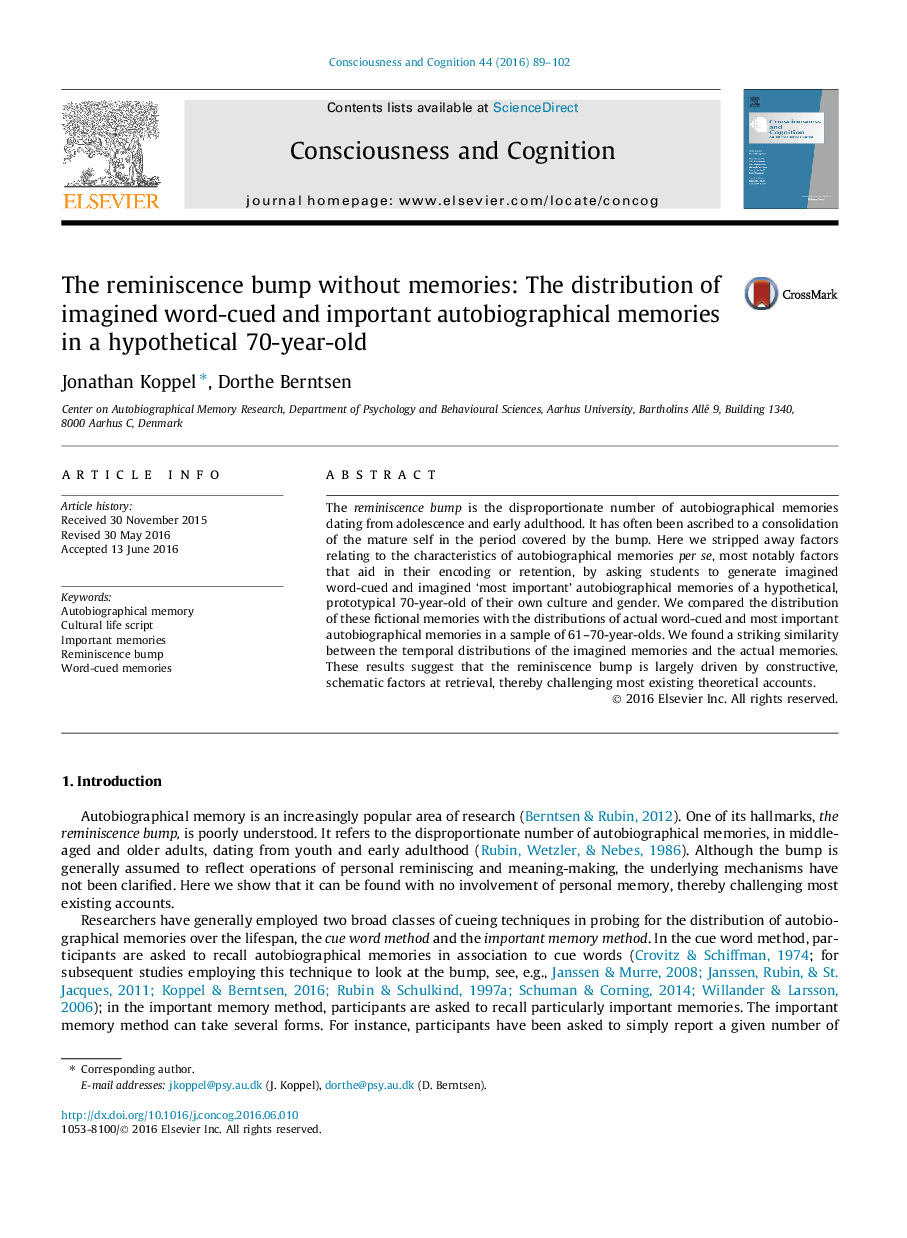| Article ID | Journal | Published Year | Pages | File Type |
|---|---|---|---|---|
| 7288312 | Consciousness and Cognition | 2016 | 14 Pages |
Abstract
The reminiscence bump is the disproportionate number of autobiographical memories dating from adolescence and early adulthood. It has often been ascribed to a consolidation of the mature self in the period covered by the bump. Here we stripped away factors relating to the characteristics of autobiographical memories per se, most notably factors that aid in their encoding or retention, by asking students to generate imagined word-cued and imagined 'most important' autobiographical memories of a hypothetical, prototypical 70-year-old of their own culture and gender. We compared the distribution of these fictional memories with the distributions of actual word-cued and most important autobiographical memories in a sample of 61-70-year-olds. We found a striking similarity between the temporal distributions of the imagined memories and the actual memories. These results suggest that the reminiscence bump is largely driven by constructive, schematic factors at retrieval, thereby challenging most existing theoretical accounts.
Related Topics
Life Sciences
Neuroscience
Cognitive Neuroscience
Authors
Jonathan Koppel, Dorthe Berntsen,
